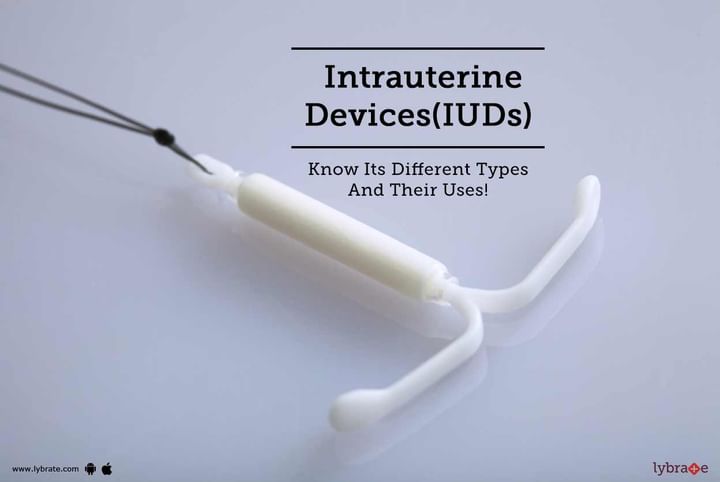Intrauterine Devices(IUDs) - Know Its Different Types And Their Uses!
An IUD is usually a T-shaped plastic device wrapped in copper. It can also contain hormones. An IUD gets inserted into the uterus, and a plastic string is tied to one end of the IUD that hangs down via cervix, into the vagina. One can feel the IUD in place by feeling the string. The string is also used for the removal of an IUD.
There are two major types of IUDs:
Hormonal IUDs
• This type of IUD releases Levonorgestrel, a progestin hormone.
• A hormonal IUD is considered to be a little more effective than the other type of IUDs.
• It usually prevents pregnancy for about five years.
Copper IUD
• This is the most common form of IUD in which a copper wire is wrapped around the stem of the IUD.
• This form of IUD can stay in place for around three, five or ten years (depending upon type) and is considered to be an effective contraception method. Some Copper IUDs are semicircular in shape.
How IUDs work?
• Both forms of IUDs prevent the fertilisation by adversely affecting the local environment of uterine cavity and also eggs & sperms.
• The uterine lining, where the fertilised egg implants itself and grows is also affected.
Hormonal IUD
• Hormonal IUDs work by preventing fertilization, which is carried out by adversely affecting sperms and making the mucus present in cervix sticky and thick.
• This makes it difficult for sperm to reach the uterus. It also helps in keeping the endometrium or uterus lining from growing excessively thick.
• The hormones present in this IUD reduce menstrual cramping and menstrual bleeding.
Copper IUD
• Copper is toxic for sperms. This type of IUD makes fallopian tubes and uterus produce certain fluids which adversely affect sperms.
• White blood cells are contained in this fluid along with copper ions, prostaglandins, and enzymes.
Insertion
• IUDs can be inserted during any time when you are not pregnant or do not suffer from pelvic infections. However, it is preferable to insert it during or just after the menstrual period.
• The insertion process of IUDs is simple and does not take much time. Usually, no local anaesthetic is used during the procedure.
• The insertion of IUDs is easier in women who have delivered normally.
Mild cramping and some amount of light bleeding or spotting are likely to be expected for a few days after the insertion of an IUD. You should avoid having sex, using tampons, or putting anything in your vagina for at least one day after the procedure. It is advisable for you to visit your doctor from time to time after the insertion procedure.
In case you have a concern or query you can always consult an expert & get answers to your questions!



+1.svg)
